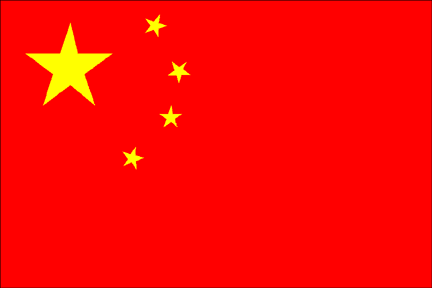





The central task of the 1998 restructuring of the State Council was to separate the functions of the government from those of enterprises. Owing to the special nature of the defense industrial system, including the Ministry of Nuclear Industry, the new State Atomic Energy Agency functions under the Defense Industrial Committee (General Office) under the State Council. The State Aerospace Bureau and the State Atomic Energy Agency were retained, representing the country in foreign exchanges and, internally, acting as an institution of the Commission of Science, Technology and Industry for National Defense.
In 1990 China reported uranium resources equivalent to Australia’s total reserves, which are the largest in the western world. The actual resource estimates are considered a State secret, while the released Chinese numbers seem to be exaggerated, again making evaluations difficult. If the Chinese category of “Speculative Resources” were to be included, their total would exceed an unlikely 3 million tons U. China’s reported uranium resources are concentrated in the northern provinces of Shanxi and Xinjiang, and in the south eastern coastal provinces of Yunnan, Guangxi and Guangdong. Uranium is distributed over 200 known deposits. A total of 600 metric tons uranium were mined in 1993, down from 800 tons in 1992, constituting of the world total. A mill dedicated to uranium exports is located at south of Chengsha, in Hunan province. The ore capacity of this mill is at 725,000 tons/year, yielding about 1000 tons.
China has two nuclear power plants on line with a 2.1 GW total capacity. The first is a domestically designed 300 MW pressurized water reactor (PWR) near Shanghai, which is currently receiving a two reactor upgrade from South Korean firms. The only other operating plant is another PWR with two 900 MW French built reactors which supply power to Hong Kong from Daya Bay, both went on line in the spring of 1994. Nuclear power is appealing to the Chinese government in that it offers power independent of coal. The Chinese seem willing to accept the limitations of an open fuel cycle and decommissioning problems for the environmental benefits of no ash and sulfur emissions. There are also several nuclear projects under construction, with Russian, French, and Canadian firms involved in several projects. The United States, in October 1997, announced approval for the sale of US nuclear power reactors to China, in exchange for a Chinese commitment not to supply nuclear technology to Iran. China will add 6,600 MW to current capacity by 2004 through upgrades of the two existing plants and construction of two additional plants.
In May 1997, China's State Council issued a Circular on Strict Implementation of China's Nuclear Export Policy which covered the export of nuclear and nuclear-related dual-use items on an interim basis. This directive:
Nuclear Export Control Regulations
In September 1997, China issued nuclear export control regulations and an associated control list. These regulations:
Zangger Committee Membership
On October 16, 1997, China joined the NPT Exporters Committee, also known as the Zangger Committee, which represents China's first membership in a multilateral export control regime. Ambassador Li Changhe of the Chinese Permanent Mission in Vienna delivered a prepared statement at the October meeting which outlined in detail China's nuclear and nuclear-related dual-use export control policies and practices. His statement set forth the basis and content of Chinese nuclear export controls, and he stressed that China's nuclear export control system is based on three basic principles: (1) serving peaceful purposes only; (2) accepting IAEA safeguards; (3) forbidding transfer to any third country without China's consent.
Li also made clear that China's policy of not assisting unsafeguarded nuclear facilities extends to activities related to nuclear explosive devices, and that China strictly prohibits any exchange of nuclear weapons related technology and information with other countries. In another key pronouncement, Li affirmed that Chinese government departments have the right to deny the export of an item not on a control list if there is reason to believe that the export might contribute to nuclear proliferation. Such "catch-all" controls have become an important feature of an effective nationwide WMD export control system.
